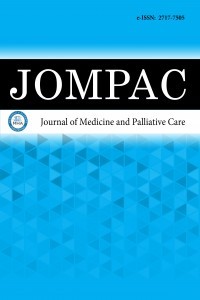1.
Saremi H, Hakhamaneshi E, Rabiei MA:Percutaneous releaseof trigger fingers:comparing multiple digits with single digitinvolvement. Arch Bone J Surg. 2016;4:224-227.
2.
Bonnici AV, Spencer JD. A survey of ‘trigger finger’ in adults. JHand Surg Br. 1988;13:202-203.
3.
Saldana MJ. Trigger digits:diagnosis and treatment. J Am AcadOrthop Surg. 2001;9(4):246-252.
4.
Paulius KL, Maguina P. Ultrasound-assisted percutaneous triggerfinger release:is it safe? Hand (N Y). 2009;4:35-37.
5.
Hansen RL, Søndergaard M, Lange J. Open surgery versusultrasound-guided corticosteroid injection for trigger finger:arandomized controlled trial with 1-year follow-up. J Hand SurgAm. 2017;42(5):359-366.
6.
Rojo-Manaute JM, Soto VL, De las Heras Sánchez- Heredero J,Del Valle Soto M, Del Cerro-Gutiérez M, Martín JV. Percutaneousintrasheath ultrasonographically guided first annular pulleyrelease:anatomic study of a new technique. J Ultrasound Med.2010;29(11):1517-1529.
7.
Rajeswaran G, Lee JC, Eckersley R, Katsarma E, Healy JC.Ultrasound-guided percutaneous release of the annular pulley intrigger digit. Eur Radiol. 2009;19(9):2232- 2237.
8.
Abe Y. Clinical results of a percutaneous technique for trigger digitrelease using a 25-gauge hypodermic needle with corticosteroidinfiltration. J Plast Reconstr Aesthet Surg. 2016;69(2):270-277.
9.
Bruijnzeel H, Neuhaus V, Fostvedt S, Jupiter JB, MudgalCS, Ring DC. Adverse events of open A1 pulley release foridiopathic trigger finger. J Hand Surg Am. 2012;37(8):1650-1656.doi:10.1016/j.jhsa.2012.05.014
10.
Will R, Lubahn J. Complications of open trigger finger release. JHand Surg Am. 2010;35(4):594-596. doi:10.1016/j.jhsa.2009.12.040
11.
Slesarenko YA, Mallo G, Hurst LC, Sampson SP, Serra-Hsu F.Percutaneous release of A1 pulley. Tech Hand Up Extrem Surg.2006;10(1):54-56. doi:10.1097/00130911-200603000-00010
12.
Kerrigan C, Stanwix M:Using evidence to minimize the cost oftrigger finger care . J Hand Surg. 2009;34:997-1005.
13.
Elsayed MM. Percutaneous release of trigger finger. Egypt OrthopJ. 2013;48:277-281.
14.
Huang HK, Wang JP, Wang ST, Liu YA, Huang YC, Liu CL.Outcomes and complications after percutaneous release fortrigger digits in diabetic and non-diabetic patients. J Hand SurgEur Vol. 2015;40(7):735-739. doi:10.1177/1753193415590389
15.
Froimson AI. In: DP Green, editor. Operative hand surgery. 3rded. New York: Churchill Livingstone. (1993). p. 1995-1998.
16.
Fiorini HJ, Santos JB, Hirakawa CK, Sato ES, Faloppa F, AlbertoniWM. Anatomical study of the A1 pulley: length and location bymeans of cutaneous landmarks on the palmar surface. J HandSurg Am. 2011;36(3):464-468. doi:10.1016/j.jhsa.2010.11.045
17.
Sheikh E, Peters JD, Sayde W, Maltenfort M, Leinberry C. Aprospective randomized trial comparing the effectiveness of oneversus two (staged) corticosteroid injections for the treatment ofstenosing tenosynovitis. Hand (N Y). 2014;9(3):340-345.
18.
Aksoy A, Sir E. Complications of percutaneous release of thetrigger finger. Cureus. 2019;11(2):e4132. doi:10.7759/cureus.4132
19.
Bain GI, Turnbull J, Charles MN, Roth JH, Richards RS.Percutaneous A1 pulley release: a cadaveric study. J Hand SurgAm. 1995;20(5):781-786. doi:10.1016/S0363-5023(05)80430-7
20.
Mishra SR, Gaur AK, Choudhary MM, Ramesh J. PercutaneousA1 pulley release by the tip of a 20-g hypodermic needlebefore open surgical procedure in trigger finger management.Tech Hand Up Extrem Surg. 2013;17(2):112-115. doi:10.1097/BTH.0b013e31828ef983
21.
Stahl S, Kanter Y, Karnielli E. Outcome of trigger finger treatmentin diabetes. J Diabetes Complications. 1997;11(5):287-290
22.
Bruijnzeel H, Neuhaus V, Fostvedt S, Jupiter JB, Mudgal CS,Ring DC. Adverse events of open A1 pulley release for idiopathictrigger finger. J Hand Surg Am. 2012;37(8):1650-1656
23.
Gilberts EC, Beekman WH, Stevens HJ, Wereldsma JC.Prospective randomized trial of open versus percutaneoussurgery for trigger digits. J Hand Surg Am. 2001;26(3):497-500.doi:10.1053/jhsu.2001.24967

